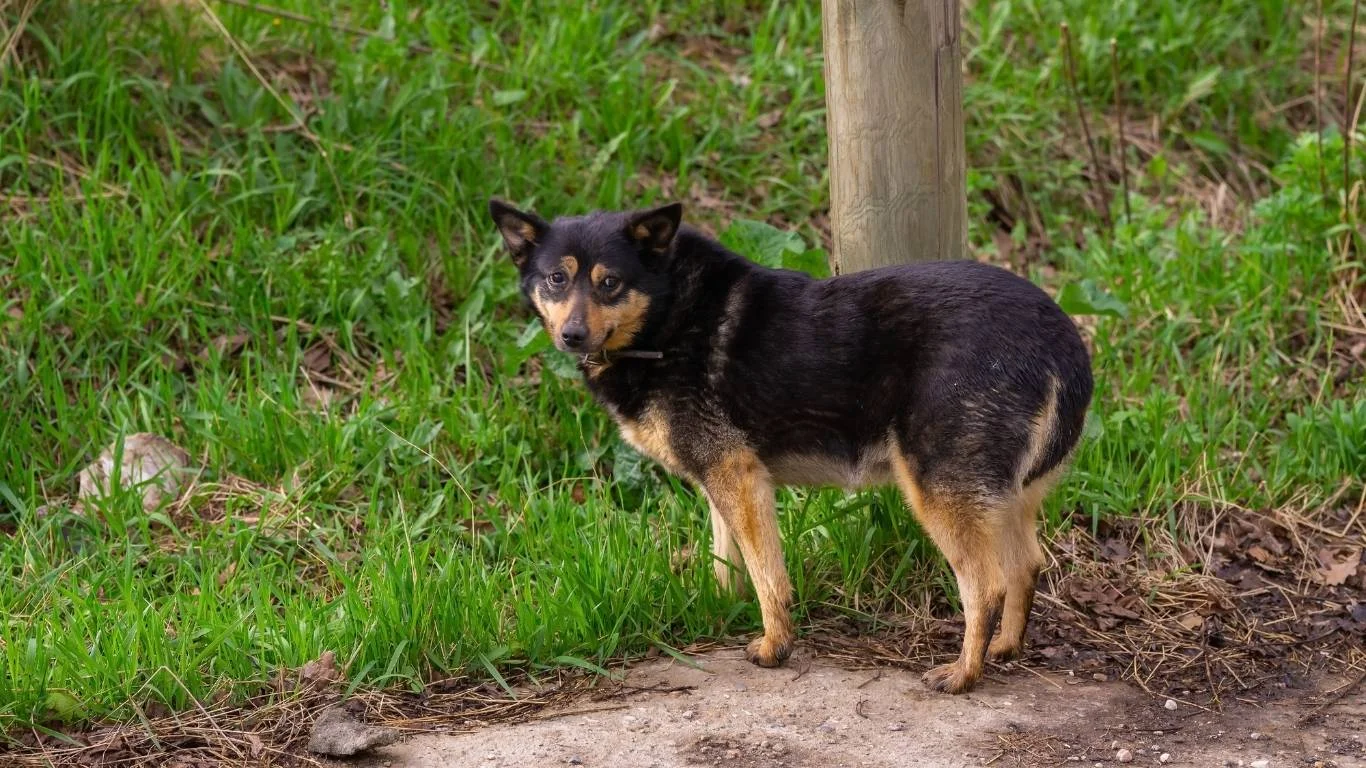How to Tell if Your Dog is Allergic to Grass: Symptoms & Solutions
As a Veterinary Assistant with a focus on nutrition, I’ve seen it all when it comes to pets and their sensitivities. One common concern pet owners have is whether their dog could be allergic to grass. It’s a tricky situation, because while it’s not the most talked-about allergy, it’s certainly something many dog owners face. If you’ve noticed your dog scratching excessively or having other unusual symptoms after playing outside, it could be more than just the usual post-play discomfort. In this post, we’re diving deep into how to tell if your dog is allergic to grass, and what to look out for to get the best care for your furry friend.
What Does It Mean for Your Dog to Be Allergic to Grass?
When we talk about dogs being allergic to grass, we’re usually referring to an allergy to the pollen, spores, or even the proteins found in the grass itself. Dogs, like humans, can develop sensitivities or allergies to certain environmental factors, and grass is one of the more common triggers. If your dog has ever seemed overly sensitive after running through a grassy field or spending time in the backyard, it’s possible they could be allergic.

Grass pollen, in particular, is one of the main allergens that can affect our pets. Much like hay fever in humans, when a dog is exposed to grass or its pollen, their immune system may overreact, leading to symptoms like itching, sneezing, and inflammation. It can be frustrating for both the dog and the owner when these symptoms aren’t immediately identifiable as a grass allergy, but knowing what to watch for can help you figure it out.
Common Signs That Your Dog May Be Allergic to Grass
If you’re wondering how to tell if your dog is allergic to grass, keep an eye out for these common signs:
- Excessive Scratching or Licking – This is usually the first sign. If your dog is constantly scratching or licking their paws, face, or belly after being outside, grass might be the culprit. Allergies can make the skin feel itchy, and your dog’s instinct will be to relieve that discomfort.
- Red, Inflamed Skin – You might notice redness, bumps, or even hot spots on your dog’s skin, especially around their paws, belly, or ears. This can be a result of the irritation caused by grass allergens.
- Sneezing or Runny Nose – Just like humans, dogs can develop respiratory symptoms when exposed to grass pollen. Sneezing, watery eyes, and a runny nose are common signs of a seasonal allergy to grass.
- Ear Infections – Itchy, inflamed ears can be another symptom of grass allergies. Your dog might start shaking their head or scratching their ears more often if they have an allergic reaction.
- Excessive Paw Licking or Chewing – If your dog is licking or chewing on their paws more than usual, especially after walking on grass, it could indicate that the grass is causing irritation.

How Grass Allergies in Dogs Are Diagnosed
One of the trickiest things about diagnosing a grass allergy is that the symptoms can overlap with other conditions like flea allergies, food allergies, or even environmental allergies unrelated to grass. A clear diagnosis typically involves a thorough examination by your vet, and possibly some diagnostic tests. Here’s a rundown of what to expect:
- Physical Exam – Your vet will perform a physical exam, looking for signs of itching, irritation, or infection that could suggest an allergy. This might include checking for red skin, hair loss, or ear infections.
- Blood Tests – In some cases, your vet may recommend blood tests to check for elevated levels of specific antibodies that indicate an allergic reaction. This can help confirm whether grass or another allergen is the cause.
- Skin Tests – This is a more specific test where small amounts of allergens are introduced into your dog’s skin to see if there’s a reaction. It’s a quick way to determine if your dog is allergic to grass or other environmental allergens.
What Can You Do to Help Your Dog with a Grass Allergy?
If your dog has been diagnosed with a grass allergy, don’t panic—there are plenty of options to help them feel better and manage their symptoms. Treatment usually involves a combination of strategies, ranging from lifestyle changes to medications. Here’s what you can do to ease their discomfort:
Managing Exposure to Grass
The first step in helping your dog with a grass allergy is to minimize their exposure to grass. While it may not always be practical to keep your dog inside, here are a few tips that can reduce their time in grassy areas:
- Limit Outdoor Time During Peak Allergy Seasons – Grass pollen levels tend to be highest during certain seasons, especially in the spring and summer. If possible, try to keep your dog indoors during these peak times.
- Wipe Down Your Dog After Outdoor Play – After your dog has been outside, wipe their paws, face, and belly with a damp cloth to remove any pollen or allergens that might be clinging to their fur. This can significantly reduce the amount of allergens they bring inside.
- Consider Using an Allergy-Friendly Dog Bed – Having a designated place for your dog to rest inside, away from allergens, can help reduce the overall exposure to grass particles that might trigger an allergic reaction.

Medications and Treatments
If your dog’s symptoms are persistent or severe, medications might be necessary to manage their allergy symptoms. Depending on the severity of the reaction, your vet may recommend:
- Antihistamines – These can help reduce itching and inflammation caused by the allergy.
- Corticosteroids – These are sometimes prescribed for more severe allergic reactions, though they should only be used under veterinary guidance due to potential side effects.
- Immunotherapy – In some cases, your vet may recommend allergy shots to help desensitize your dog to specific allergens like grass pollen over time.
Remember, always check with your vet before starting any medication or treatment, as they can best guide you on what’s appropriate for your dog’s specific condition.
How Diet Plays a Role in Managing Grass Allergies in Dogs
As a veterinary assistant, I’ve seen first-hand how diet can impact a dog’s overall health, including their ability to cope with allergies. You might not think of food as a direct cause of a grass allergy, but what your dog eats can either help or worsen their symptoms. Dogs with food sensitivities often have weaker immune systems, making them more prone to allergic reactions from environmental factors like grass. A balanced, nutritious diet can support your dog’s immune system and potentially minimize the severity of their allergies.
Anti-Inflammatory Diets to Combat Allergy Symptoms
If your dog has a grass allergy, you can support their immune system by choosing foods that are rich in anti-inflammatory properties. Look for high-quality dog food that contains ingredients like:
- Omega-3 Fatty Acids – These healthy fats, often found in fish oils, help reduce inflammation and support skin health. Omega-3s can be especially beneficial for dogs who experience itchy skin due to allergies.
- Antioxidants – Ingredients like blueberries, carrots, and spinach are rich in antioxidants, which help fight free radicals and inflammation caused by allergens.
- Probiotics – A healthy gut equals a stronger immune system. Probiotics, found in foods like yogurt or specially formulated dog food, help maintain the balance of beneficial bacteria in your dog’s gut, which can improve their ability to handle allergens.

Consider Grain-Free or Limited Ingredient Diets
If your dog has food sensitivities alongside their grass allergy, a grain-free or limited-ingredient diet might be a good option. These diets focus on single protein sources and a limited number of ingredients to minimize the chances of triggering an allergic response. Speak to your vet about switching to a hypoallergenic dog food formula that excludes common allergens like grains, soy, or dairy.
Additionally, making sure your dog is getting enough water and hydration is key to maintaining healthy skin and coat. Dry, flaky skin can worsen allergic reactions, so providing plenty of fresh water will help maintain your dog’s skin health, which is crucial for dealing with allergens like grass pollen.
Alternative Remedies for Grass Allergies in Dogs
While medications and dietary changes are often the first line of defense against grass allergies, there are also some alternative remedies that can help ease your dog’s symptoms. These might not completely replace traditional treatments, but they can certainly make your pup more comfortable in the meantime. Many dog owners swear by natural remedies as a way to provide relief without relying too much on pharmaceuticals.
Herbal Remedies for Skin Irritation
Several herbs are known for their anti-inflammatory properties and can be used topically or incorporated into your dog’s diet to help reduce skin irritation caused by grass allergies. Some of these include:
- Oatmeal – Oatmeal baths are a tried-and-true remedy for itchy skin in dogs. Oats are gentle on the skin and help to soothe irritation caused by allergens like grass pollen.
- Chamomile – Chamomile is well known for its calming properties. You can apply cooled chamomile tea to your dog’s itchy areas or use it in a bath to reduce inflammation.
- Aloe Vera – Aloe vera gel can be applied topically to soothe and cool itchy skin. It has healing properties that can reduce redness and inflammation.

Essential Oils for Allergy Relief
Essential oils, when used properly, can also help alleviate some of the symptoms associated with grass allergies in dogs. Lavender, for example, has natural calming effects and can help reduce stress and inflammation. However, it’s very important to use essential oils cautiously, as some oils can be toxic to dogs in high concentrations. Always consult with your veterinarian before using essential oils, and only use pet-safe, diluted versions. Some oils that are generally considered safe for dogs when used in small amounts include:
- Lavender – Calming, anti-inflammatory effects that can help reduce stress and itchiness.
- Frankincense – Known for its ability to reduce inflammation and promote overall immune health.
- Roman Chamomile – Soothing and relaxing, perfect for helping your dog relax during allergy flare-ups.
When to See Your Veterinarian
While grass allergies are common, there are instances where you should absolutely consult with your vet to get a better understanding of your dog’s condition. If your dog’s symptoms seem severe, persistent, or get worse over time, it’s time to reach out to your vet. Here are some signs that indicate it’s time for a professional evaluation:
- Severe or Uncontrolled Symptoms – If your dog’s itching, skin irritation, or respiratory issues are not improving with over-the-counter remedies or lifestyle changes, a vet visit is necessary. Your vet can help with a proper diagnosis and provide more intensive treatments.
- Secondary Infections – If your dog develops hot spots, ear infections, or bacterial infections from excessive scratching, it’s important to seek veterinary care. Secondary infections can complicate the allergy and make it harder for your dog to heal.
- Changes in Behavior – If your dog starts acting unusually, like being lethargic, refusing to eat, or becoming excessively anxious, it could be a sign that the allergy is taking a toll on their overall health. Don’t ignore these changes.
Final Thoughts on Grass Allergies in Dogs
As a pet owner, I understand how frustrating it can be to watch your dog struggle with allergies. Grass allergies are particularly tricky because they are environmental, making them harder to avoid. However, by learning to recognize the signs and symptoms, managing your dog’s diet, and incorporating natural remedies or medications, you can significantly improve their quality of life. Remember, a little preventative care goes a long way, and always keep an open line of communication with your vet for the best possible treatment plan.
How to Manage Your Dog’s Grass Allergy Long-Term
Once you’ve got a solid handle on how to tell if your dog is allergic to grass and how to manage their symptoms in the short-term, the next step is thinking long-term. Long-term management of grass allergies is all about creating a lifestyle that minimizes your dog’s exposure to triggers while also supporting their immune system to handle the occasional flare-up. This involves a mix of preventative care, monitoring, and knowing when to take action. Let me share some tips that have worked for many pet owners I’ve assisted as a veterinary assistant with a focus on nutrition.
Creating a Safe Outdoor Environment for Your Dog
One of the most important long-term strategies in managing grass allergies is controlling your dog’s exposure to the allergen. Now, I know it’s not always practical to keep your dog inside all the time, especially if they’re used to being outside. But with a little creativity, you can reduce their exposure and still give them the outdoor playtime they love.
- Establish a Designated Play Area – If you have a yard, create a designated play area that’s free from grass. You could lay down artificial turf or even build a gravel play space. This keeps your dog active outdoors without subjecting them to grass pollen.
- Choose the Right Time to Go Outside – Pollen levels tend to be the highest early in the morning and late afternoon. Try to schedule your dog’s walks or playtime during off-peak hours when pollen levels are lower.
- Outdoor Dog House or Kennel – If your dog enjoys being outside but suffers from grass allergies, you might want to set up an outdoor dog house or kennel with a grass-free, enclosed area where they can stay cool and safe from allergens. Make sure the space is comfortable, with proper shade and ventilation.

When to Consider Allergy Testing and Immunotherapy
If you’ve tried several different ways to manage your dog’s allergy symptoms with limited success, it might be time to consider allergy testing and immunotherapy. These advanced options can be life-changing for dogs with severe allergies, providing long-term relief from grass allergies and other environmental allergens.
Allergy Testing: Is It Right for Your Dog?
Allergy testing is one of the most effective ways to pinpoint exactly what your dog is allergic to. A test can help determine if it’s just grass or a combination of other environmental factors like dust, pollen, or even mold. Your veterinarian can guide you on the different types of allergy tests available:
- Blood Tests – These tests measure the level of antibodies your dog’s immune system produces in response to specific allergens, such as grass pollen.
- Skin Testing – A more direct approach, skin testing involves placing small amounts of allergens on your dog’s skin and monitoring for reactions. This helps identify the allergens that trigger their symptoms.
Once the testing is done, your vet will create a treatment plan, which might include immunotherapy (allergy shots) to gradually desensitize your dog to the specific allergens they react to.
Immunotherapy: A Long-Term Solution
Immunotherapy is one of the most effective long-term treatments for dogs with severe allergies. It involves giving your dog a series of injections or oral drops with small amounts of the allergens they’re sensitive to. Over time, these treatments help “train” their immune system to tolerate the allergens more effectively, reducing the severity of allergic reactions. While immunotherapy can take several months to show results, many dogs experience significant relief once their immune system builds up tolerance.
In my experience, immunotherapy has worked wonders for many dogs with persistent allergies. While it’s a commitment, it’s often worth it for the long-term quality of life it provides. If your dog’s symptoms are really disrupting their daily activities, it may be a treatment worth discussing with your vet.
Alternative Treatments for Grass Allergy Relief
While traditional treatments like medications and immunotherapy are often the go-to solutions for grass allergies in dogs, some owners prefer to take a more natural approach. There are several alternative treatments that can help alleviate symptoms without relying heavily on pharmaceuticals. Just keep in mind that natural remedies can complement, but shouldn’t replace, the professional care provided by your veterinarian.
Acupuncture and Chiropractic Care
Alternative treatments like acupuncture and chiropractic care are becoming more popular for managing allergies in dogs. Acupuncture, in particular, is known for its ability to relieve chronic pain and inflammation, making it a great option for dogs suffering from itchy skin or joint discomfort due to allergies. Some owners report that their dogs feel more relaxed and have improved overall well-being after acupuncture sessions.
Chiropractic care can also help improve your dog’s overall immune function by ensuring that their nervous system is functioning at its best. This can be a helpful addition to managing allergy symptoms, particularly if your dog is also dealing with inflammation and discomfort from constant scratching or paw chewing.
Homeopathy and Supplements
For those seeking a more holistic approach, some dog owners turn to homeopathic remedies or supplements that support immune health and reduce allergy symptoms. Common supplements include:
- Quercetin – Often referred to as “nature’s Benadryl,” quercetin is a flavonoid that has natural anti-inflammatory properties, making it effective in reducing symptoms of allergies.
- Fish Oil – Rich in Omega-3 fatty acids, fish oil helps support your dog’s immune system and skin health, reducing the effects of allergens like grass pollen.
- Probiotics – Probiotics are great for gut health, and a healthy gut often means a stronger immune system to fight off allergens.
Before starting any new treatment, including supplements or homeopathic remedies, always consult with your vet. They can ensure these treatments are safe and appropriate for your dog’s specific condition.
References
Disclaimer
It’s important to note that the information provided in this article is not intended to replace professional veterinary advice. Every dog is unique, and their health needs may vary. Always consult with your veterinarian before starting any new treatments or making changes to your dog’s diet or lifestyle. If your dog’s symptoms persist or worsen, seeking professional help is crucial for their well-being.






